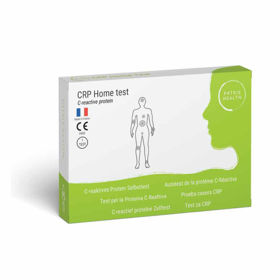Customer question:
Where does the bile hurt? Anonymous customer's question
Pharmacist's answer:
Bile is a liquid produced by the liver. It is stored and secreted through the gallbladder into the small intestine. Depending on the cause of the problem, different symptoms may appear when there is a problem or pain related to the bile.
One of the most common causes of pain in the gallbladder area is gallstones. These occur when solid particles build up in the bile, usually due to an imbalance of chemicals in the bile. Gallstones can cause a blockage in the bile duct or gallbladder, leading to intense pain in the upper right part of the abdomen. The pain is often accompanied by nausea, vomiting, and discomfort after meals, especially fatty foods.
In addition to gallstones, pain in the bile can also be caused by inflammation of the gallbladder or bile ducts, which bacterial infections or other factors can cause. Fever, chills, and general malaise often accompany inflammation. In rarer cases, pain in the bile can be caused by cancer, such as bile duct cancer or gallbladder cancer, but these situations are less common.
Diagnosis of gallbladder pain usually involves a medical examination and various tests, such as abdominal ultrasound, CT, or MRI imaging, as well as laboratory tests to check liver enzyme levels and other indicators. Depending on the problems identified, the doctor may recommend various therapeutic options, from pain relievers to surgical procedures such as cholecystectomy (removal of the gallbladder).
In addition to treatment, it is also essential to monitor the diet. For people with gallstone problems, a diet high in fiber and low in fat can reduce the risk of gallstones and ease symptoms. Limiting the consumption of alcohol and other potentially irritating substances can also help prevent exacerbations.
In which part of the body do we feel pain from bile?
Pain from gallstones is usually felt in the upper right part of the abdomen, below the ribs. This area is called the right upper quadrant of the abdomen. Bile, produced by the liver, is stored in the gallbladder and secreted into the small intestine, where it participates in the digestion of fats. Various factors can cause bile problems, but the most common are gallstones, inflammation of the gallbladder, or bile ducts.
Gallstones are solid particles that form in the bile due to an imbalance of chemicals. When stones block the bile ducts or gallbladder, intense pain can occur in the upper right part of the abdomen. The pain usually worsens after a meal, especially after eating fatty foods, which is often accompanied by nausea, vomiting, and discomfort.
In addition to gallstones, pain in the bile can also be caused by inflammation of the gallbladder or bile ducts. Inflammations are often the result of bacterial infections or other inflammatory conditions. Symptoms include fever, chills, general malaise, and abdominal pain.
A doctor usually uses various diagnostic methods to diagnose gallbladder pain, including abdominal ultrasound, CT or MRI imaging, and laboratory tests to check liver function and liver enzyme levels. Based on the findings, the doctor will recommend appropriate treatment, which may include medication to relieve symptoms and surgical procedures such as removal of the gallbladder (cholecystectomy) if the stones are causing many problems or if you are dealing with severe inflammation in the gallbladder area.
To relieve symptoms and prevent further problems related to bile, it is also important to follow a special diet that includes fewer fatty ingredients, is rich in fiber, and limits alcohol consumption. Regular doctor follow-up is crucial to effectively managing biliary problems and maintaining overall gastrointestinal health.
Interesting reading: How does bile hurt
Interesting reading: How to get rid of gallstones?










 Facebook
Facebook
 Instagram
Instagram
 info@moja-lekarna.com
info@moja-lekarna.com

